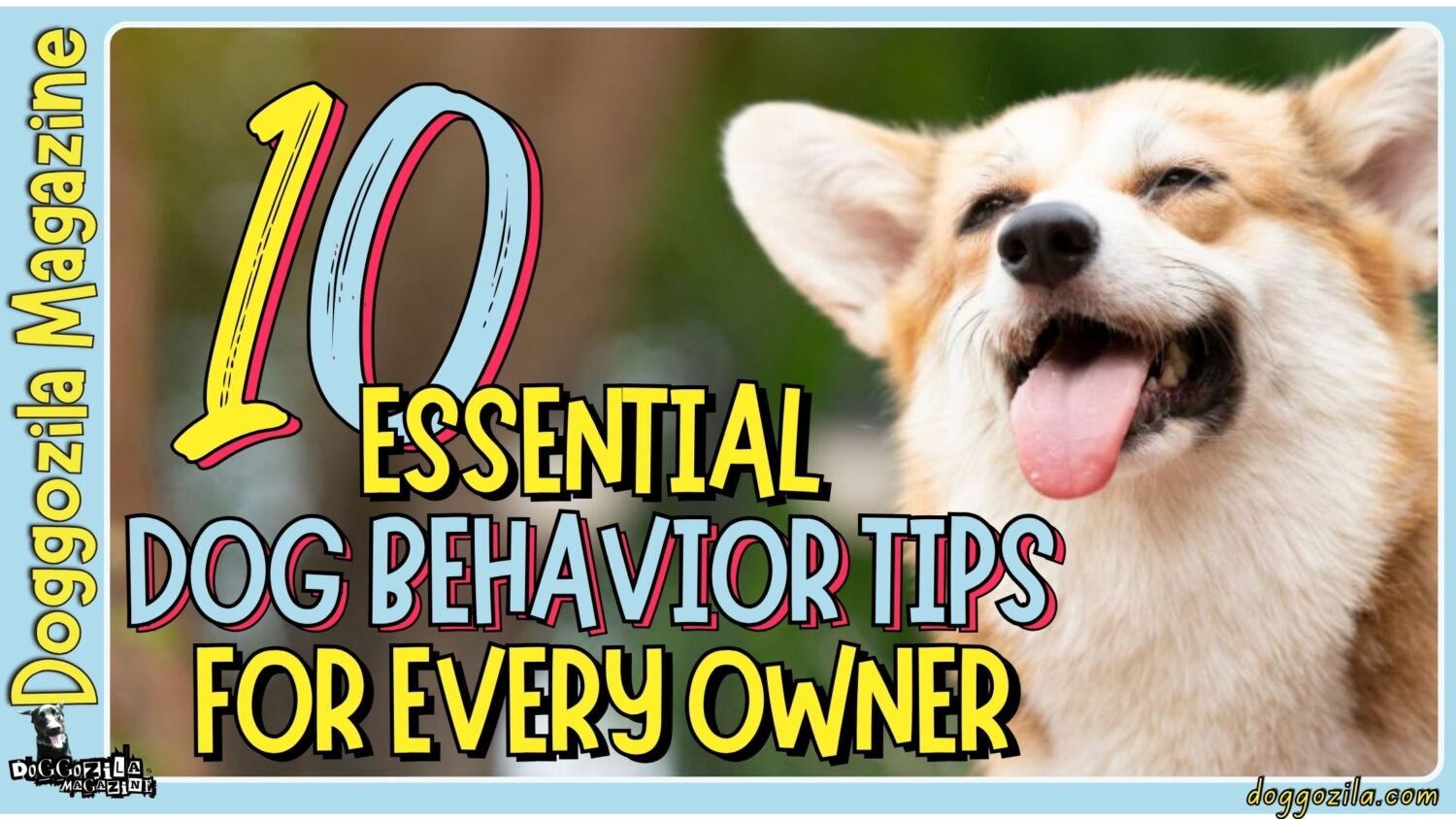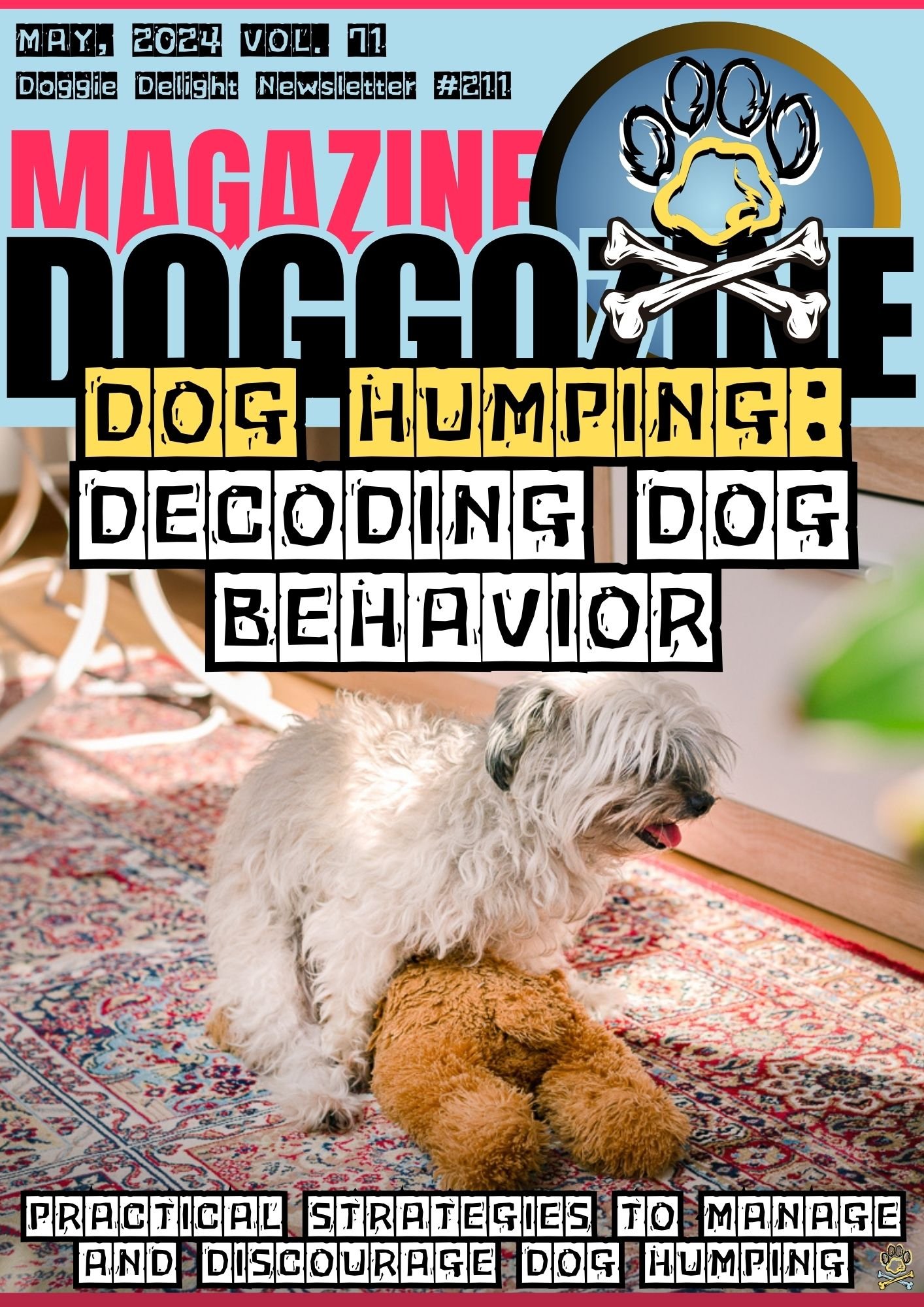
UNRAVELING THE MYSTERY BEHIND WHY YOUR DOG HUMPS EVERYTHING
Does your dog have a habit of humping things? It may seem odd. But don’t worry! This behavior has reasons behind it. We’ll explore why dogs do this. You’ll gain insights into managing it better. With understanding, you can build a strong bond with your furry friend.
In this guide, we’ll delve into various factors driving dog humping. These include sexual instincts, dominance, boredom, stress, and even medical issues. We’ll share expert tips to discourage unwanted humping. Our goal is to help you and your pup live in harmony. Ready to decode your dog’s humping secrets? Let’s embark on this enlightening journey. You’ll grasp the reasons behind this behavior. And you’ll learn how to foster a happy, well-behaved companion.
Decoding Dog Humping Behavior: Understanding the Basics
As a pet parent, grasping your dog’s humping is crucial. It strengthens your bond and helps shape good behavior. Dogs are highly social. They use unique ways to interact and communicate. Every action, from wagging to head tilts, conveys meaning.
Observing these behaviors gives insights into your pup’s emotions and needs. Taking time to interpret them creates understanding between you two. This lays the foundation for a rewarding relationship with your canine companion.
Humping is one such behavior that puzzles many owners. But it’s a natural instinct driven by various factors.
Let’s explore them to grasp why dogs hump:
- Sexual Reasons: Humping can stem from sexual urges, especially in intact dogs. It’s a mating behavior hardwired into their biology.
- Dominance Display: Some dogs may hump to assert dominance over people or other animals. This establishes their perceived social status.
- Excitement and Overstimulation: High energy levels or excitement can trigger humping as an outlet for excess enthusiasm.
- Boredom and Lack of Exercise: Bored, under-exercised dogs may turn to humping as a way to burn off pent-up energy.
- Stress and Anxiety Relief: Humping can be a self-soothing behavior for anxious or stressed dogs, providing comfort through repetitive motion.
- Medical Conditions: In rare cases, dog humping may indicate an underlying medical issue, such as a urinary tract infection or skin irritation.
Understanding your dog’s actions is an important part of being a pet owner. It takes time, care, and a desire to learn. By knowing the basics of how dogs behave, you can build a loving relationship with trust and respect.
🔑 Key Points: Learning why dogs do certain things is key for pet lovers. It helps create a strong, positive bond with their furry friends.
The Role of Sexual Behavior in Dog Humping
One common reason dogs hump is sexual behavior. Even dogs that have been fixed may still hump sometimes. Neutering or spaying can reduce humping, but it doesn’t always stop it fully.
Dogs may hump due to their sexual instincts. They might do it when they’re excited or aroused. Seeing other dogs, people, or even toys can trigger this behavior. Humping is a way for dogs to act on their sexual urges.
However, if your dog humps too much, there could be an issue. It may mean they lack proper training or have a hormone imbalance. If humping disrupts your life, talk to a dog expert. A trainer or vet can check for any problems causing excessive humping.
🔑 Key Points: Sexual urges drive some dog humping, even in fixed dogs. But frequent, excessive humping might signal an underlying problem needing professional help.
Other Reasons for Dog Humping Things
Besides sexual motivations, dogs hump for other reasons too. Humping can be a way to show dominance or get attention. Some dogs do it when they’re excited, stressed, or seeking comfort. Puppies may hump as part of play or exploratory behavior.
They’re learning about their bodies and instincts. Proper training can curb this over time as they mature. Medical issues like urinary tract infections can also prompt humping in some cases. If your dog suddenly starts humping with no obvious trigger, a vet visit is wise. Ruling out health problems is important.
No matter the reason, humping can be an undesirable behavior. With patience and positive reinforcement training, most dogs can be taught not to hump people or things inappropriately.
🔑 Key Points: Dogs hump for dominance, attention, excitement, stress relief, and exploration. Addressing humping through training is key, unless there’s an underlying medical issue.
Tips for Dominance Behavior and Social Communication: A Complex Interplay
Dog mounting can be a form of dominance behavior. It’s a way for dogs to communicate their social standing. Dogs may hump other canines or people. This asserts their dominance or establishes their rank in the group.
This conduct often arises due to lack of proper socialization. Dogs who haven’t learned appropriate interaction may exhibit this. Dominance behavior is intricate. It can stem from various reasons. Addressing it requires a qualified dog trainer’s guidance.
🔑 Key Points: Humping in dogs can signify dominance behavior. It’s a form of social communication. Inadequate socialization or misunderstanding of suitable interactions often causes this. Help from professionals is advisable to address the underlying issues.
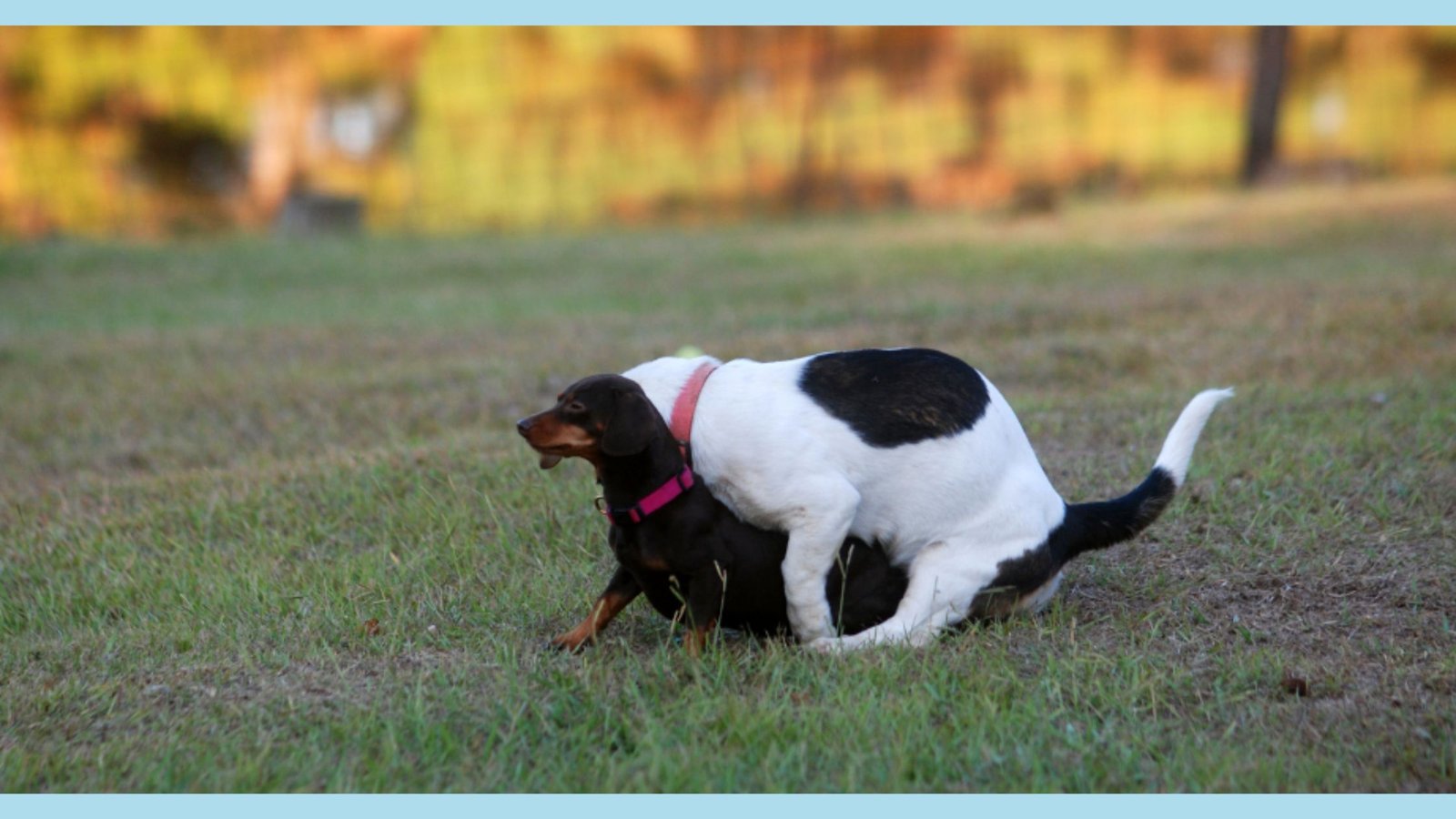
BOREDOM, STRESS, AND ANXIETY: PSYCHOLOGICAL FACTORS SHAPING CANINE CONDUCT
Boredom or stress can contribute to humping in dogs. When lacking mental stimulation or exercise, dogs release pent-up energy through humping. This behavior copes with anxiety. The pandemic exacerbated this issue. Many dogs faced routine and social interaction changes. Providing adequate play, exercise, and mental enrichment minimizes boredom and stress. This reduces inappropriate humping tendencies.
Examples of Mental Enrichment for Dogs
- Practice nose work games to engage their sense of smell.
- Teach new tricks to challenge their minds.
- Provide puzzle toys to stimulate problem-solving abilities.
- Rotate different toys to prevent boredom.
- Take your dog on varied walks to explore new sights and smells.
- Enroll in obedience classes for socialization and training.
By addressing boredom and stress, you create a more enriching environment. This fulfills your dog’s needs. It reduces anxiety and undesirable behaviors like dog humping.
🔑 Key Points: Boredom and stress contribute to humping in dogs. Providing mental stimulation through games, training, and environmental enrichment alleviates these issues. This diminishes the likelihood of inappropriate conduct.
Engaging Toys and Activities to Prevent Boredom
Providing your pup with stimulating toys and activities can help alleviate boredom. This, in turn, reduces the likelihood of humping behavior.
- Puzzle Toys and Interactive Feeders: These mentally stimulating toys encourage problem-solving skills. They keep your dog engaged and occupied.
- Nose Work and Scent Games: Engaging your dog’s natural scenting abilities is enjoyable. It provides much needed mental stimulation and physical exercise.
- Training Sessions and Trick Learning: Regular training reinforces good behavior. Teaching new tricks it’s good as keeps your dog’s mind active.
- Chew Toys and Long-Lasting Treats: Chewing is a natural, soothing behavior for dogs. Providing appropriate chew toys and treats redirects this urge.
🔑 Key Points: Offering a variety of mentally engaging toys and activities combats boredom. This helps manage humping behavior in dogs, especially during challenging times like the pandemic.
Identifying and Addressing Potential Medical Issues
In some rare cases, persistent or unusual humping may indicate an underlying medical condition. It could signal a urinary tract infection or prostate issues.
As a responsible pet owner, promptly consulting your veterinarian is essential. They can perform a thorough examination and identify any potential health problems.
Proper medical treatment can alleviate your dog’s discomfort. It may also help curb the unwanted humping behavior.
🔑 Key Points: While less common, medical issues like infections can sometimes cause humping in dogs. Consulting a vet ensures your pet’s well-being.

PRACTICAL STRATEGIES TO MANAGE AND DISCOURAGE DOG HUMPING
Certified professional dog trainers like Pamela Johnson and Michael Baugh recommend a multi-faceted approach. This approach helps manage and discourage humping behavior effectively.
Strategies to Discourage Dog Humping
One effective way to stop your pup from humping is to interrupt the behavior firmly. When you see your dog starting to hump, say a firm “no” or make a loud noise to disrupt the action. This immediate response helps your pet understand that humping is unacceptable.
Another useful technique is redirecting your dog’s attention to a toy or activity they enjoy. For example, you could toss a ball or give them a puzzle toy filled with treats. This positive distraction will refocus their energy on an appropriate activity. It’s also important to reinforce good behavior with praise, pets, or treats. When your dog isn’t humping, reward them with attention or a small treat. This positive reinforcement helps your pup learn what behaviors are desirable.
Making sure your dog gets enough exercise and mental stimulation is key too. A tired, well-exercised dog is less likely to hump out of boredom or excess energy. Take your pup on daily walks or runs, and provide puzzle toys that engage their minds. If the humping persists despite your efforts, consider consulting a professional dog trainer. They can assess your dog’s specific situation and provide personalized guidance on effective training techniques.
By consistently implementing these strategies and working closely with a certified trainer if needed, you can help your furry friend learn more appropriate ways to interact and express themselves.
🔑 Key Points: To discourage humping, try interrupting the behavior firmly, redirecting to toys or activities, rewarding good behavior, ensuring adequate exercise and mental stimulation, and seeking professional training help if necessary. Consistent, positive reinforcement is key.
The Significance of Exercise and Mental Stimulation for Your Dog
Providing your dog with proper exercise and mental stimulation is crucial for their overall health and happiness. Regular physical activity helps burn off pent-up energy, preventing destructive behaviors like humping that stem from boredom or restlessness.
But exercise isn’t just about physical exertion. Mental enrichment is equally important for keeping your pup’s mind engaged and stimulated. Puzzle toys, nose work games, and training sessions all give your dog’s brain a workout, preventing them from acting out due to understimulation.
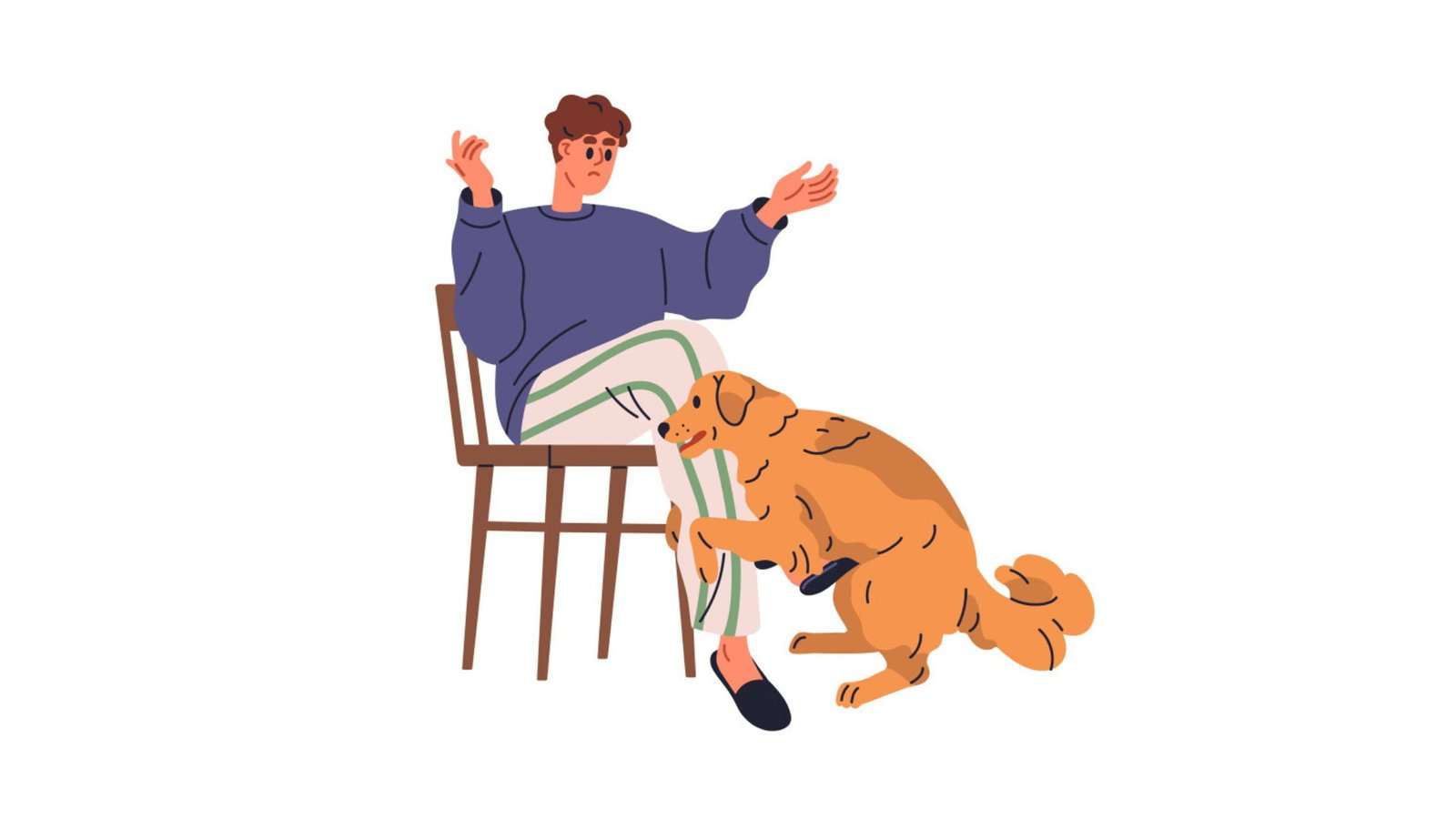
UNDERSTANDING YOUR DOG’S BODY LANGUAGE AND SOCIAL CUES
One of the keys to decoding your dog’s behavior is learning to interpret their body language and social cues. From a wagging tail to a tilted head, every movement and expression carries meaning. By carefully observing your dog’s posture, facial expressions, and overall demeanor, you can gain valuable insights into their emotional state and intentions. This knowledge can help you anticipate and prevent unwanted behaviors, like humping, before they escalate.
Common Dog Body Language Cues
- Relaxed body and soft eyes indicate a calm, happy dog
- Stiff posture and intense stare may signal dominance or aggression
- Lowered head and tucked tail often indicate fear or submission
- Yawning, licking lips, and avoiding eye contact can be signs of stress
🔑 Key Points: Careful observation and interpretation of your dog’s body language and social cues are essential for understanding their emotional state and preventing unwanted behaviors like dog humping.
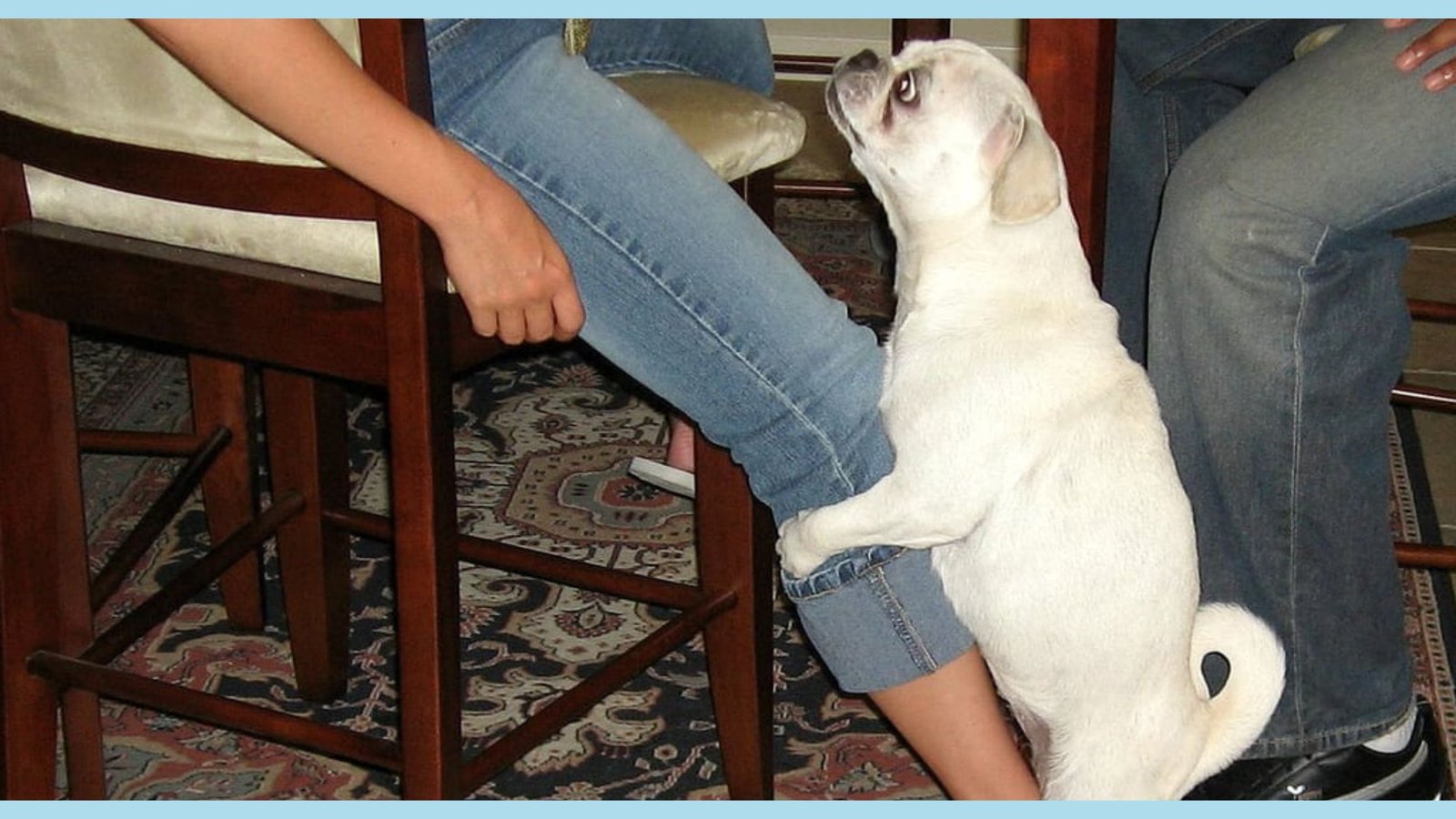
EXPERT INSIGHTS: TIPS FROM CERTIFIED PROFESSIONAL DOG TRAINERS
When it comes to managing humping behavior, certified professional dog trainers and educator like Pamela Johnson and Houston dog trainer Michael Baugh have valuable insights to share. Drawing from their extensive experience working with dogs of all ages and breeds, these experts recommend a comprehensive approach that addresses the root causes of the behavior, rather than just the symptoms.
Tips from Professional Trainers
- Look for signs of anxiety or stress. These can be triggers for humping behavior. Always try to help your dog feel calm and relaxed.
- Give your furry friend plenty of exercise and fun activities. A tired dog is less likely to hump.
- Use treats and praise when your pup behaves well. Positive reinforcement works wonders for good behavior.
- If humping starts, calmly interrupt and redirect attention elsewhere. But don’t punish your pup, as that can make things worse.
- For persistent issues, get expert help from a qualified dog trainer. They have strategies to curb this behavior.
By following advice from experts and staying patient, you can help curb humping. With exercise, mental stimulation, and positive reinforcement, your pup will learn better manners.
🔑 Key Points: Dog trainers say the keys are addressing root causes like anxiety, providing enough activity, using positive reinforcement, gently interrupting the behavior, and getting professional guidance if needed.
Creating a Harmonious Environment for a Multi-Pet Household
Having multiple furry friends at home is a joy, but it takes work too. Cats and dogs have different needs and behaviors to understand. Give each pet their own space, with separate food, water, litter boxes, and beds. This prevents conflicts over resources and provides comfort zones.
Make sure to spend quality one-on-one time with each pet too. This strengthens your bond and prevents jealousy between them. With time and patience, your pets may even become friends! But take it slow, supervise interactions, and respect each other’s boundaries.
Creating a harmonious multi-pet home is possible. Just meet each animal’s unique needs and give them time to adjust to one another. With love, understanding, and dedicated care, your dog and other pets can happily coexist as one big, furry family.
🔑 Key Points: Fostering a harmonious multi-pet household requires understanding each animal’s unique needs, providing separate resources, and offering ample individual attention to ensure a peaceful coexistence.
The Impact of Neutering or Spaying on Dog Humping Behavior
While neutering or spaying your dog can help reduce the frequency of dog humping behavior driven by sexual instincts, it’s not always a complete solution. Desexed dogs may still hump for various reasons, including dominance, stress, or learned habits. As a responsible pet owner, it’s essential to understand that neutering or spaying is just one piece of the puzzle when it comes to managing humping behavior.
By combining this important procedure with proper training, socialization, and addressing any underlying issues, you can help your dog develop more appropriate ways of interacting with their environment.
🔑 Key Points: Although neutering or spaying can help reduce sexually motivated humping in dogs, it’s not a one-size-fits-all solution, and pet parents must address other potential underlying causes through training and socialization.
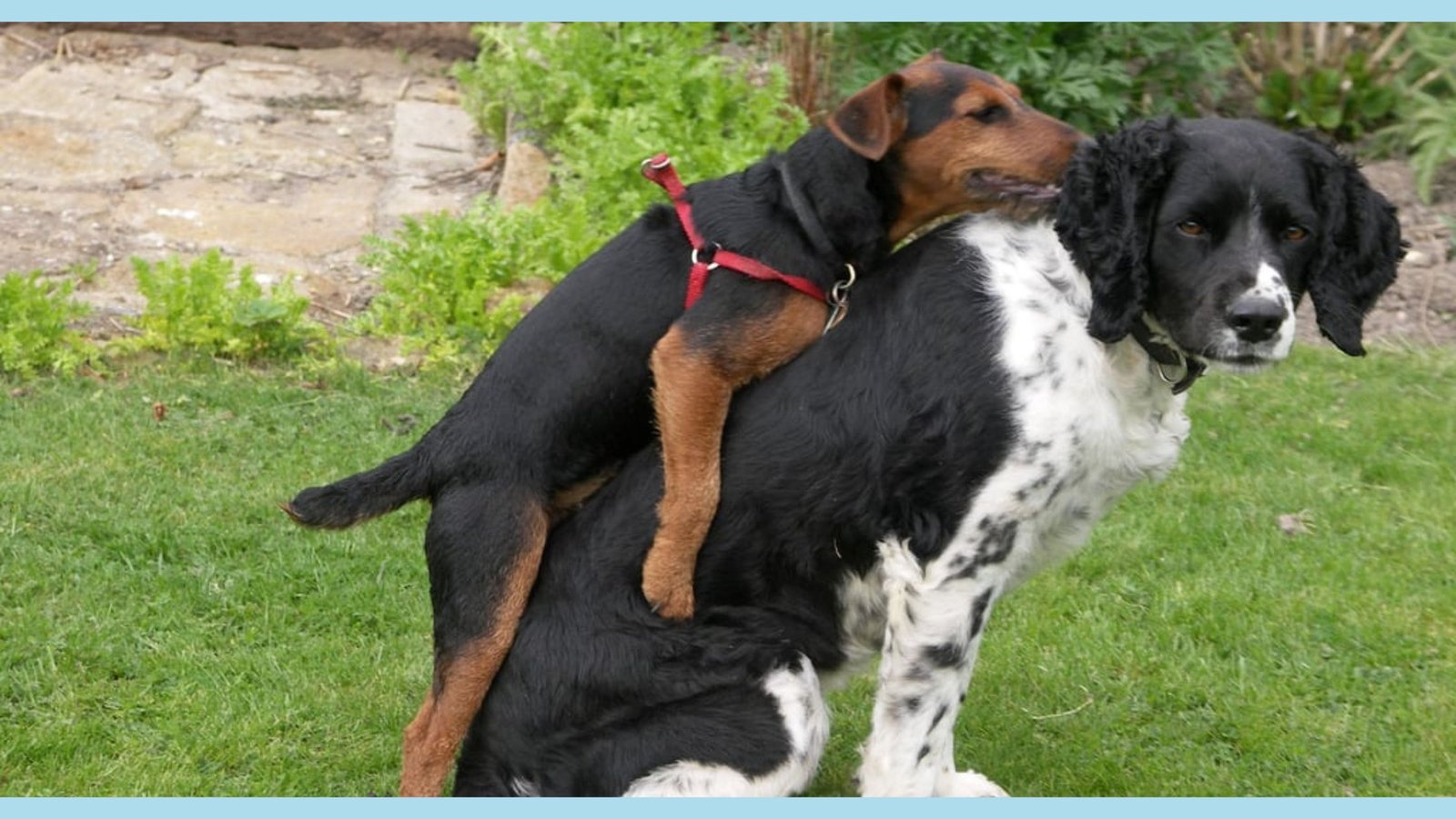
BEYOND BEHAVIOR: THE EMOTIONAL AND PHYSICAL WELL-BEING OF YOUR DOG
When addressing your dog’s behavior, it’s crucial to consider their overall emotional and physical well-being. Many common dog behaviors, including humping, can be influenced by factors such as stress, anxiety, or even physical discomfort.
By taking a holistic approach to your dog’s care, you can help ensure that their needs are being met on all levels. This includes providing a balanced diet, regular veterinary check-ups, and a nurturing home environment that promotes a sense of security and belonging.
🔑 Key Points: Addressing your dog’s emotional and physical well-being is essential when managing behavior issues like humping, as these factors can significantly influence your pet’s actions and overall quality of life.
Unique Dog Behaviors and What They Mean
Dogs exhibit a wide range of diverse behaviors that can sometimes leave their owners puzzled. From the infamous head tilt to the endearing “zoomies,” each action has a purpose and meaning.
For example, a dog’s head tilt is often a sign of curiosity or attentiveness, indicating that they are actively listening to you or trying to understand a new sound. Zoomies, on the other hand, are sudden bursts of energy that often occur when a dog is excited,playful, or relieved after a stressful situation.
By familiarizing yourself with these unique behaviors and their meanings, you can better understand your dog’s emotional state and needs, allowing you to respond appropriately and strengthen your bond.
🔑 Key Points: Understanding the diverse range of unique dog behaviors, from the head tilt to the zoomies, can provide valuable insights into your pet’s emotional state and help you better meet their needs.
A Quick Summary about Dog Humping Behavior
To sum up, grasping and handling your dog humping behavior is crucial for fostering a harmonious bond with your furry friend. From comprehending the role of sexual behavior and dominance to pinpointing psychological factors like stress and anxiety, this guide equips you with practical solutions. By recognizing and tackling medical issues and implementing expert strategies, you can effectively manage and discourage humping.
Ensuring your dog gets adequate exercise, mental stimulation, and a supportive environment are vital for their overall well-being. Observing your dog’s body language and seeking insights from certified trainers enriches the journey of pet parenthood. Ultimately, by delving into your dog’s behaviors, you pave the way for a fulfilling and rewarding companionship.
Take proactive steps today to nurture a happy, balanced relationship with your beloved canine companion. Your furry friend deserves the best care and attention, making every moment together truly special. We appreciate you embarking on this enlightening journey with us.
In the end, understanding and addressing dog humping behavior is key. This guide helps you decode sexual urges, dominance, stress, and anxiety. By recognizing medical issues and using expert advice, you can manage humping effectively.
Proper exercise, mental stimulation, and a supportive home are crucial for your dog’s happiness. Observing body language and consulting trainers enrich the pet-owner bond. Delving into your dog’s behaviors fosters a rewarding companionship. Take steps to build a balanced relationship with your furry friend. They deserve the best care for a truly special bond. Thank you for joining us on this educational journey.
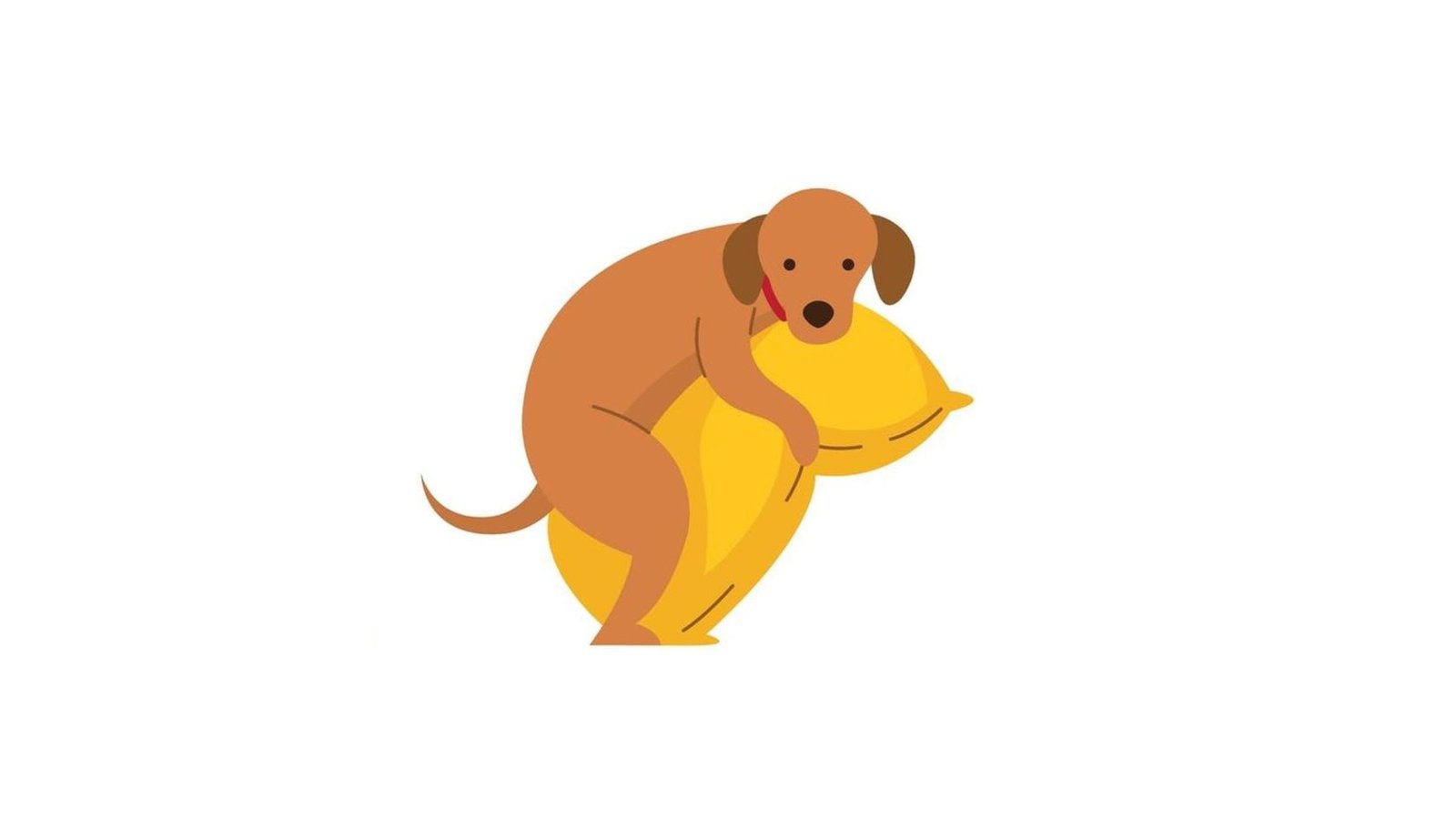
To continue reading on topic, we suggest to visit this article by Preventive Vet!

